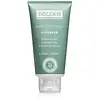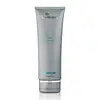What's inside
What's inside
 Key Ingredients
Key Ingredients

No key ingredients
 Benefits
Benefits

 Concerns
Concerns

 Ingredients Side-by-side
Ingredients Side-by-side

Water
Skin ConditioningSodium Lauroyl Methyl Isethionate
CleansingCocamidopropyl Hydroxysultaine
CleansingDisodium Laureth Sulfosuccinate
CleansingAcrylates Copolymer
Glycerin
HumectantPhenoxyethanol
PreservativeParfum
MaskingAminomethyl Propanol
BufferingDisodium Cocoamphodiacetate
CleansingPotassium Sorbate
PreservativeDisodium EDTA
Ethylhexylglycerin
Skin ConditioningZinc Gluconate
Skin ConditioningPropanediol
SolventButeth-3
SolventSodium Benzotriazolyl Butylphenol Sulfonate
UV AbsorberLens Esculenta Seed Extract
Skin ProtectingBoerhavia Diffusa Root Extract
Skin ProtectingTributyl Citrate
SolventEchinacea Purpurea Extract
MoisturisingDisodium Acetyl Glucosamine Phosphate
Skin ConditioningAlgae Extract
EmollientCI 19140
Cosmetic ColorantCI 16035
Cosmetic ColorantCI 42090
Cosmetic ColorantWater, Sodium Lauroyl Methyl Isethionate, Cocamidopropyl Hydroxysultaine, Disodium Laureth Sulfosuccinate, Acrylates Copolymer, Glycerin, Phenoxyethanol, Parfum, Aminomethyl Propanol, Disodium Cocoamphodiacetate, Potassium Sorbate, Disodium EDTA, Ethylhexylglycerin, Zinc Gluconate, Propanediol, Buteth-3, Sodium Benzotriazolyl Butylphenol Sulfonate, Lens Esculenta Seed Extract, Boerhavia Diffusa Root Extract, Tributyl Citrate, Echinacea Purpurea Extract, Disodium Acetyl Glucosamine Phosphate, Algae Extract, CI 19140, CI 16035, CI 42090
Water
Skin ConditioningDisodium Laureth Sulfosuccinate
CleansingCocamidopropyl Hydroxysultaine
CleansingSodium Lauryl Sulfoacetate
CleansingPEG-150 Pentaerythrityl Tetrastearate
EmulsifyingCamellia Oleifera Leaf Extract
AstringentGlycerin
HumectantPanthenol
Skin ConditioningButylene Glycol
HumectantEthylhexylglycerin
Skin ConditioningPEG-6 Caprylic/Capric Glycerides
EmulsifyingDisodium EDTA
Phenoxyethanol
PreservativePotassium Sorbate
PreservativeParfum
MaskingCI 42090
Cosmetic ColorantCI 47005
Cosmetic ColorantWater, Disodium Laureth Sulfosuccinate, Cocamidopropyl Hydroxysultaine, Sodium Lauryl Sulfoacetate, PEG-150 Pentaerythrityl Tetrastearate, Camellia Oleifera Leaf Extract, Glycerin, Panthenol, Butylene Glycol, Ethylhexylglycerin, PEG-6 Caprylic/Capric Glycerides, Disodium EDTA, Phenoxyethanol, Potassium Sorbate, Parfum, CI 42090, CI 47005
Ingredients Explained
These ingredients are found in both products.
Ingredients higher up in an ingredient list are typically present in a larger amount.
Ci 42090 is a synthetic dye created from petroleum. It is used to give a bright blue color to cosmetics, medicine, and food.
Cocamidopropyl Hydroxysultaine is a synthetic cleansing agent, though it is derived from coconut oil.
It is used to enhance the texture of products by boosting lather and thickening the texture. As a cleanser, Cocamidopropyl Hydroxysultaine is mild.
Disodium EDTA plays a role in making products more stable by aiding other preservatives.
It is a chelating agent, meaning it neutralizes metal ions that may be found in a product.
Disodium EDTA is a salt of edetic acid and is found to be safe in cosmetic ingredients.
Learn more about Disodium EDTAThis ingredient is a cleansing agent, surfactant, and foam booster. It considered an alternative to traditional sulfates (Sulfosuccinate) and is allowed in "sulfate-free" products.
According to a manufacturer, this ingredient is mild and can be used in baby and bath options.
Ethylhexylglycerin (we can't pronounce this either) is commonly used as a preservative and skin softener. It is derived from glyceryl.
You might see Ethylhexylglycerin often paired with other preservatives such as phenoxyethanol. Ethylhexylglycerin has been found to increase the effectiveness of these other preservatives.
Glycerin is already naturally found in your skin. It helps moisturize and protect your skin.
A study from 2016 found glycerin to be more effective as a humectant than AHAs and hyaluronic acid.
As a humectant, it helps the skin stay hydrated by pulling moisture to your skin. The low molecular weight of glycerin allows it to pull moisture into the deeper layers of your skin.
Hydrated skin improves your skin barrier; Your skin barrier helps protect against irritants and bacteria.
Glycerin has also been found to have antimicrobial and antiviral properties. Due to these properties, glycerin is often used in wound and burn treatments.
In cosmetics, glycerin is usually derived from plants such as soybean or palm. However, it can also be sourced from animals, such as tallow or animal fat.
This ingredient is organic, colorless, odorless, and non-toxic.
Glycerin is the name for this ingredient in American English. British English uses Glycerol/Glycerine.
Learn more about GlycerinParfum is a catch-all term for an ingredient or more that is used to give a scent to products.
Also called "fragrance", this ingredient can be a blend of hundreds of chemicals or plant oils. This means every product with "fragrance" or "parfum" in the ingredients list is a different mixture.
For instance, Habanolide is a proprietary trade name for a specific aroma chemical. When used as a fragrance ingredient in cosmetics, most aroma chemicals fall under the broad labeling category of “FRAGRANCE” or “PARFUM” according to EU and US regulations.
The term 'parfum' or 'fragrance' is not regulated in many countries. In many cases, it is up to the brand to define this term.
For instance, many brands choose to label themselves as "fragrance-free" because they are not using synthetic fragrances. However, their products may still contain ingredients such as essential oils that are considered a fragrance by INCI standards.
One example is Calendula flower extract. Calendula is an essential oil that still imparts a scent or 'fragrance'.
Depending on the blend, the ingredients in the mixture can cause allergies and sensitivities on the skin. Some ingredients that are known EU allergens include linalool and citronellol.
Parfum can also be used to mask or cover an unpleasant scent.
The bottom line is: not all fragrances/parfum/ingredients are created equally. If you are worried about fragrances, we recommend taking a closer look at an ingredient. And of course, we always recommend speaking with a professional.
Learn more about ParfumPhenoxyethanol is a preservative that has germicide, antimicrobial, and aromatic properties. Studies show that phenoxyethanol can prevent microbial growth. By itself, it has a scent that is similar to that of a rose.
It's often used in formulations along with Caprylyl Glycol to preserve the shelf life of products.
Potassium Sorbate is a preservative used to prevent yeast and mold in products. It is commonly found in both cosmetic and food products.
This ingredient comes from potassium salt derived from sorbic acid. Sorbic acid is a natural antibiotic and effective against fungus.
Both potassium sorbate and sorbic acid can be found in baked goods, cheeses, dried meats, dried fruit, ice cream, pickles, wine, yogurt, and more.
You'll often find this ingredient used with other preservatives.
Learn more about Potassium SorbateWater. It's the most common cosmetic ingredient of all. You'll usually see it at the top of ingredient lists, meaning that it makes up the largest part of the product.
So why is it so popular? Water most often acts as a solvent - this means that it helps dissolve other ingredients into the formulation.
You'll also recognize water as that liquid we all need to stay alive. If you see this, drink a glass of water. Stay hydrated!
Learn more about Water